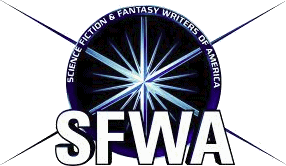Where the Mountain Meets the Moon
Not too long ago, we took a driving adventure up the east coast. I’ll admit that I was a bit nervous about it. I’ve two energetic boys (ages 9 and 7 ), and 7+ hour drives are not suited to their temperament. We don’t have a working video player in the minivan, so movies weren’t an option.
Instead, we borrowed some audio books from the library.
From a parent’s point of view, audio books are interesting. On the one hand, they don’t require any reading. On the other, they do force the listener to listen for an extended period of time. Extended listening is one of those skills that doesn’t get too much attention these days.
On the drive northward, as everyone started to get antsy, my wife popped the CD for Where the Mountain Meets the Moon into the player and we all settled into listen.
Wow.
Where the Mountain Meets the Moon tells the story of a young girl named Minli who sets out in search of a way to change her family’s fortune. Her family are rice farmers who live in the shadow of a huge barren mountain (Fruitless Mountain), and her mom is so discontent with their life that Minli decides she must go do something to change it.
Sounds like a pretty average kid’s book, right? It’s not. In this book, the characters tell stories – long, involved stories. We’d be listening along, and then the reader would say “and here is the story of…” and we be off and running on a completely different story.
At first it was a little disconcerting, but as we fell into the rhythm of the book, it became, quite simply, magical. The stories all have a mythic feel to them, and many could easily stand on their own. What really made them sing, though, were the subtle and surprising ways that they interacted with each other. A minor or hinted-at character in one story would end up being the star of another story, which would then become the source of another story’s background. And all of them had some effect (either directly or indirectly) on the primary plot.
This made the listening experience completely immersive. In each story, as we were enjoying the language, cheering for the characters, and anticipating the plot twists, we were also trying to figure out how the story connected to the rest of the book.
Wonderful stuff. We all loved it, and it carried us down the road in a cloud of magic and mystery.
Most interesting, though, was my oldest son’s reaction. He had already read the book, but found it too confusing. When read in twenty or thirty minute increments, the stories-within-the-stories had proved to be difficult to follow. Imagine coming back to a book and trying to remember not just the main plot, but also the current story being told in the book, as well as all the other stories that led up to it.
Sounds like it didn’t work for him, doesn’t it? Kind of. The thing is that he was the one who picked it out at the library. He’d enjoyed it enough to realize that he wasn’t enjoying it as much as he could be and wanted to take another crack at it.
As a writer, I’m not sure how I feel about the whole thing. Does it make sense to write a book that works better as an audio book? I would think not. On the other hand, crafting a story that both engages and challenges the reader is pretty much the gold standard of writing.
It could be that as beatiful and engaging as Where the Mountain Meets the Moon is, it just crossed over into being too challenging for my nine-year old. But I can’t say that it crossed that line entirely. If it had, he never would have wanted to come back to it.
I guess that’s the lesson I see here. If your writing is strong enough, and your story powerful enough, and your characters engaging enough, then you can move farther into challenging your readers.
And that’s a wonderful thing.
Want to comment? Hit me up on Threads or Facebook!



